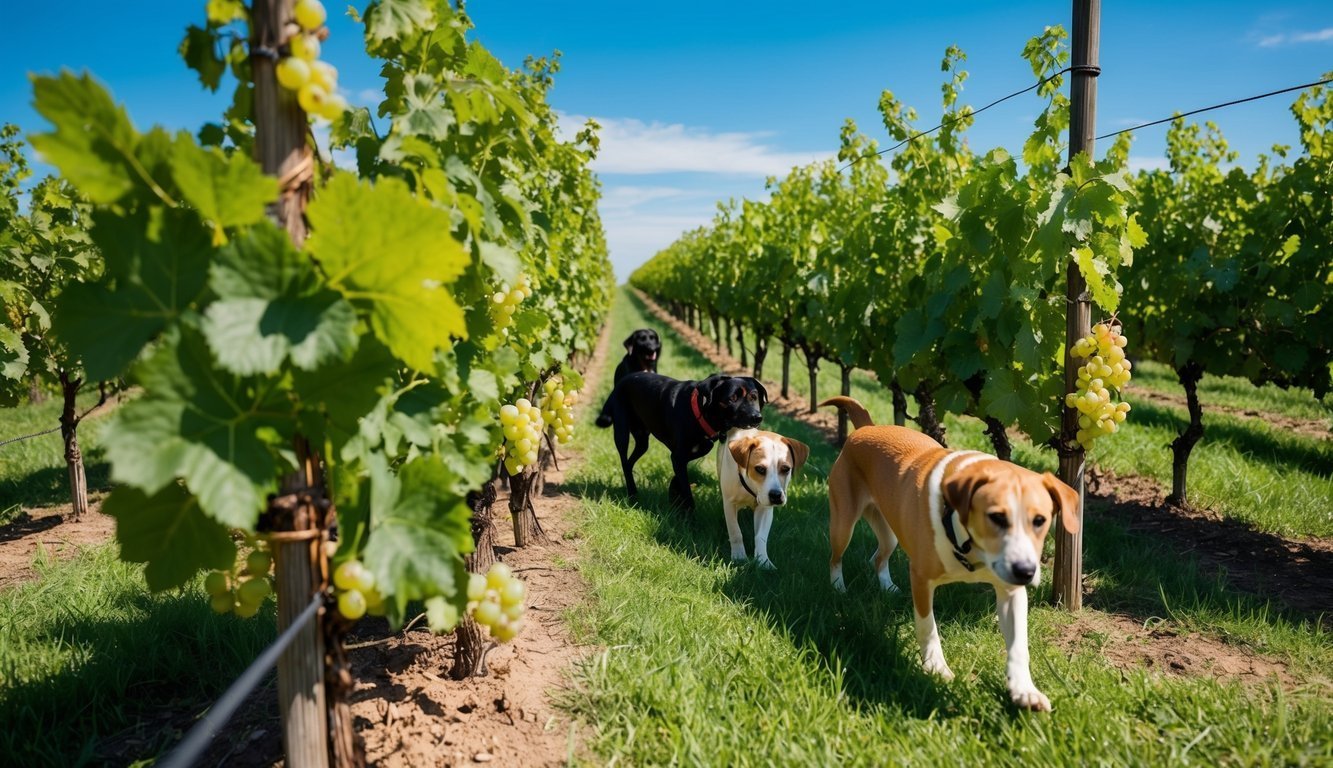Recent research has illuminated the potential role of specially trained dogs as invaluable partners for winemakers, particularly in the early detection of harmful pests and diseases threatening vineyards.
Detection of Invasive Pests
A study from Cornell University, published in late December, showed that canines excel in identifying the eggs of the invasive spotted lanternfly.
The study spotlighted two remarkable dogs: Dia, a Labrador retriever, and Fagan, a Belgian Malinois.
These canines significantly outperformed human participants when it came to locating these egg masses in wooded areas adjacent to Pennsylvania and New Jersey vineyards.
The results were impressive—dogs uncovered 3.4 times more egg masses than their human counterparts in the winter habitats favored by this pest.
However, humans proved to be more effective within the vineyard rows, likely due to their systematic search techniques.
In contrast, dogs relied on their extraordinary sense of smell to navigate the more challenging wooded terrains.
Beyond Pests: Fungal Threats
Published in the journal Ecosphere, this research offers a promising tool for winemakers facing the threat of the spotted lanternfly, a pest capable of wreaking havoc on grapevines.
Professor Angela Fuller from Cornell University’s College of Agriculture and Life Sciences has noted the pest’s potential to wipe out entire vineyards within a single growing season.
But detection isn’t limited to just pests.
Trained dogs have also shown a knack for sensing powdery mildew, a pervasive fungal threat that plagues grapevines.
Another study, detailed in the latest Journal of Veterinary Behavior, highlights how these dogs can identify agricultural risks more effectively than conventional methods, which often lack speed and cost-effectiveness.
Training and Precision
In this study, researchers employed three pet dogs with pre-existing scent detection training.
The outcomes indicated that these dogs could pinpoint powdery mildew on grape leaves with a good degree of accuracy, although further studies are encouraged to deepen this understanding.
Meanwhile, a pilot program in California demonstrated that dogs possess the ability to distinguish between the leafroll 3 virus and vine mealybugs with remarkable precision.
According to a report by Wine Business in December, two dogs, Malbec, a black Labrador, and Sauvi B, an English Springer Spaniel, displayed excellent skills in identifying mealybugs during trials.
Cab, a German Shorthaired Pointer, along with another English Springer Spaniel named Zinny, was also trained to detect leafroll 3 virus.
Stephanie Bolton, who oversees research and education at the Lodi Winegrape Commission, shared these encouraging findings at the recent Sustainable Ag Expo in San Luis Obispo.
She emphasized the potential canine detection holds for sustainable vineyard management, highlighting a future where man’s best friend helps safeguard viticulture.
Source: Decanter

